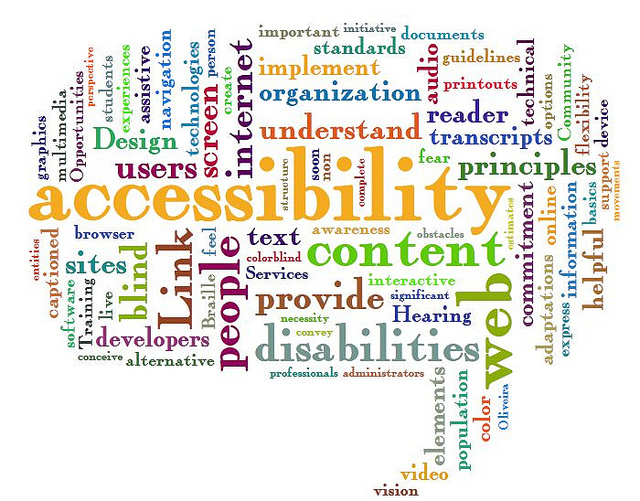By Cala Estes
I have been working as the Director of Candidate Services for the Blind Institute of Technology for a year. Before that, I worked in Human Resources for the Agricultural Research Service, an agency under the US. Department of Agriculture. While those might sound like impressive titles, I have also been on the other side of the office door, figuratively staring at a job description and wondering if I should bother applying. Since the age of eleven when I lost the remainder of my vision, I’ve been navigating a world that doesn’t always advertise itself to me.
Networking is the key to opening doors in the professional world. Making contacts, handing out your resume, and meeting recruiters face-to-face is what job fairs are all about. Making my way through large event halls while avoiding crowds and trying to pick out the voices of recruiters from the milling conversation is a challenge for me, even with all the assistive tech I have at my disposal. How can I make a good impression on a recruiter with my stress levels at max and a stack of resumes in my hand that I can’t read? Most recruitment and outreach personnel probably don’t expect to see a blind person showing up to apply for a job, so part of my short contact time is spent demystifying the “wow factor.” And by the way, I hope to hear from you soon regarding my candidacy for this position! Somehow, the fact that I’m actually looking to apply for the position gets forgotten in the melee.
The advent of virtual job fairs and LinkedIn has changed the way we network. Assuming the website hosting the job fair is accessible to screen reading software, I have the same shot as everyone else without the stress of moving through a physical space. I can now reach out from my end, but I’m always left wondering if companies are genuinely interested in reaching back. “Equal opportunity” and “reasonable accommodations” are buzzwords in the professional world. “Applicants will be considered regardless of disability” usually appears along with the other disclaimers at the bottom of the job description. I have read those words, applied for a position, and been pulled out of a group interview to speak with HR about how exactly I would be able to use a computer and operate a phone. It leaves me feeling quite skeptical when I see those words now.
So how does a company move beyond the template and really welcome all applicants? If they’re taking part in a physical job fair, how do they attract the deaf web developer or the blind marketing consultant?
When it comes to advertised company values, accessibility is as much of an attraction as sustainability or innovative technology. Knowing that a company has designed their internal systems to work for all user groups shows me they value talent and will break down the accessibility barriers to find it. Still working on internal accessibility? Posting news that your company hosted an accessibility workshop shows that leadership cares about bringing everyone to the table. How about advertising an accessibility coordinator at your next job fair, ready to assist applicants in making contact with your recruiters?
We look for signs all around us advising us of gluten free options or directing us to press 9 for Spanish. Those of us with four-legged friends light up at a sign reading, “Pet friendly establishment.” These make us feel seen and welcomed in whatever space we find them. Accessibility is my welcome sign!
Don’t let accessibility become just another buzzword. Let it be an attraction. Solicit the opinions of various user groups as you coordinate events.
Posting in online groups to fill a position? Check out the wealth of groups full of job seekers with disabilities and let people know you’re looking for an individual, not a diversity quota.
Accessibility is great in theory, and it doesn’t have to mean big expenses or long trainings. It does mean letting people know you’re open to learning alternative ways of achieving productivity. It does mean empathy. It does mean working to include the edge cases rather than exclude them.
Be open to talent and advertise accessibility!
Image from Jil Wright: Retrieved from flickr.com and used according to a Creative Commons Attribution License
